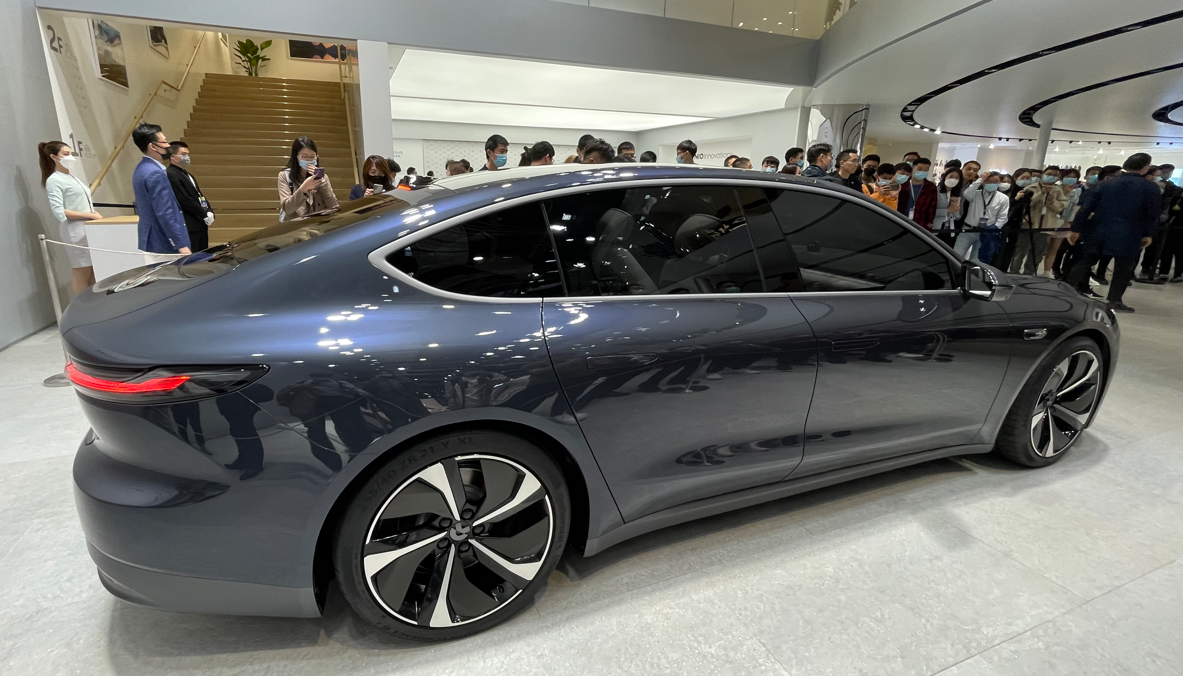An Nio investor explains why he believes Nio has a deep moat while Xpeng and Li Auto do not.
(Image credit: CnEVPost)
An article has been circulating widely in the Chinese Nio community today, and it's written by a retail investor in Nio stock about why he's more bullish on the company than its local peers Xpeng Motors or Li Auto.
Note that the author of the article is an Nio investor and his views, such as he will hold Nio until retirement, may be biased and exaggerated, but he mentions a lot of content that is worth reading.
The article comes from Tiger Brokers' community and is an interview with the investor by the Chinese brokerage firm, and below are some of the points made.
China's crackdown on the tech sector last year, as well as the resurgence of the Covid outbreak and delisting concerns so far this year, have caused a dramatic change in the valuation logic of US-listed Chinese companies.
Nio's shares are down a lot from their all-time highs, but the reality is that all US-listed Chinese companies have plunged. So short-sellers' views are not a cause for concern.
Nio has recently re-emerged as the highest market cap in the Chinese EV trio, probably because Wall Street is currently looking more at the current product matrix than the long-term plans.
Nio is important to JAC, so the latter must be very willing to let the JAC-Nio plant expand its capacity. And the reason they didn't do so should be that Nio doesn't want to do so.
This is because what is more horrible than insufficient capacity is overcapacity.
Take Xpeng for example, it saw a very good situation last year and let the capacity expand rapidly in the third and fourth quarters. But by the end of this year, it was the first to raise prices and the first to reduce them in the form of offering discounts.
Xpeng began deliveries of the P5, a new model, in November last year, and even so, it has recently experienced a shortage of orders, leading to a decline in capacity utilization.
Unlike the high-end market where Nio is located, which has not seen a significant increase in model supply, while the market around RMB 200,000 where Xpeng is located has seen an explosion in new models.
As a result, Nio's share of the premium EV market has not declined, while Xpeng has seen a decline in share in the market where it is located.
Li Auto is currently using extended-range technology, which has not allowed it to build a moat. For example, Huawei-backed AITO, Dongfeng Motor's Voyah, and Hozon Auto's Neta have all started offering or will soon offer models with similar powertrains.
Li Auto has not yet experienced the kind of shortage of orders that Xpeng has, but if AITO further expands production, Li ONE could face trouble.
Li Auto founder Li Xiang has said that the company's precise positioning is a moat, but in reality anything that can be copied by others is not a moat.
Nio, after surviving the 2019 crisis, accumulated a lot of capital ammunition last year and is preparing to enter the mass market.
Li Auto, on the other hand, has no moat and no moves in building infrastructure.
Nio can rely on ET7, ES7 and the older ES8, ES6 and EC6 to continue to maintain its share of the high-end pure EV market in the coming year, and can develop sub-brand models with ease to lay the foundation for higher sales in the future.
In larger auto shows, BMW, Mercedes-Benz and Audi will request to set their booths in a different area from Nio because if they are placed in the same area, then the audience will all be attracted away by Nio's booth.
As to when the consensus of Nio's peers will become the consensus of ordinary Chinese consumers, one can observe whether Nio's vehicles will be frequently used as wedding cars. (CnEVPost note: Chinese tradition is to use limousines at weddings.)
There are many strong companies in China, each of which could build another Li Auto, Xpeng, Leapmotor, Neta if they wanted to.
For example, AITO is targeting the Li Auto market and Xiaomi is targeting Xpeng, but no one is targeting Nio because it's not hard to build the same channel, after-sales system, software and hardware, but the company's power replenishment system is impossible to copy.
There are limited good positions available for battery swap stations, and after Nio has occupied them, it will be too late for others to follow.
As for the argument that battery swap stations are unnecessary after the popularity of 800V high-voltage fast charging stations, this view is the result of not thinking deeply.
Shopping malls, highway service areas, and residential bureau areas simply do not have enough power capacity, and even if only 30 percent of EVs use 800V superchargers, even nuclear power will not provide enough capacity.
If you wish to read the full text of the article in Chinese, you can click here, or click here to read the automatically translated version.
Note: Weilai in the automatic translation refers to Nio, Xiaopeng is Xpeng, and Li Xiang is Li Auto.
The Chinese article is too oral, and the automatic translation may have a lot of hard-to-understand content. If you have felt confused, you can leave a message to discuss.
Further Reading is a new section of CnEVPost that aims to share articles we see that are worth reading.
Become A CnEVPost Member
Become a member of CnEVPost for an ad-free reading experience and support us in producing more quality content.
Already a member? Sign in here.

